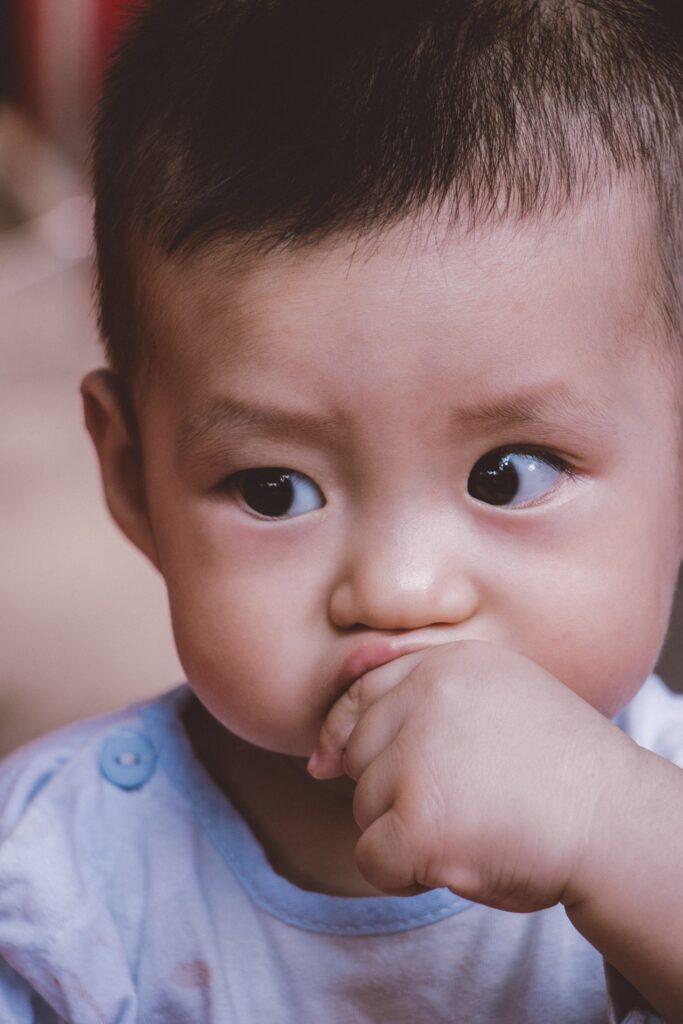Conjunctivitis may occur due to various reasons. In this article we’ll discuss the common signs and symptoms to look out for, as well as when your baby may require a doctor’s visit.
What it Is!

Better known as pink eye, is an inflammation or infection of the transparent membrane known as the conjunctiva that lines your eyelid as well as covers the white part of your eyeball. When the small blood vessels in the conjunctiva become inflamed, they become more visible. This is the cause of the whites of your eyes to appear reddish or pink.
It is commonly caused by a bacterial or a viral infection, an allergic reaction, or in babies, an incompletely opened tear duct.
Although conjunctivitis can be irritating, it is rare that it affects vision. Treatment may help ease the discomfort of conjunctivitis. Conjunctivitis can be contagious, therefore, early diagnosis and treatment may help limit the spread.
Conjunctivitis Symptoms

The most common symptoms of conjunctivitis include:
- Redness in one of the eyes or both eyes
- Itchiness in one of the eyes or both eyes
- A gritty feeling in one of the eyes or both eyes
- A discharge in one of the eyes or both eyes that forms a crust during the night that could prevent your eye or eyes from opening properly in the morning.
- Tearing
When to Visit a Doctor
There are, however, serious eye conditions that may cause eye redness. These conditions may cause eye pain, a feeling that something is stuck inside your eye, blurred vision as well as light sensitivity. If you are experiencing any of these symptoms, it is imperative that you seek urgent care.
Individuals who wear contact lenses need to ensure they stop wearing their contacts as soon as conjunctivitis symptoms appear. If symptoms don’t improve within 12 to 24 hours, it is best to make an appointment with your eye doctor to ensure that you don’t have a more serious infection that is related to your contact lens use.
The Causes You Need to Know!

The causes of conjunctivitis include:
- Viruses
- Bacteria
- Allergies
- A chemical splash that has entered the eye
- A foreign object in the eye
- A blocked tear duct in newborns
Viral and Bacterial…
Adenovirus is often the typical cause of conjunctivitis but it may be caused by herpes simplex virus as well as varicella-zoster virus, and various other viruses. The virus that causes coronavirus disease in 2019 may also cause conjunctivitis.
Viral as well as bacterial conjunctivitis may occur along with symptoms of a cold or respiratory infection such as a sore throat. If you wear contact lenses that aren’t cleaned properly or aren’t your own, you could contract bacterial conjunctivitis that may be passed on to your baby.
Both types of conjunctivitis are very contagious. It can spread through direct as well as indirect contact with the liquid that drains from the eye of an individual who is infected. One or both eyes may become infected.
Allergic Conjunctivitis
Allergic conjunctivitis generally affects both eyes and is a response to an allergy causing substance such as pollen. In response to these allergens, your body begins to produce an antibody called immunoglobulin E. This antibody is known to trigger special cells that are called mast cells in the mucous lining of your eyes as well as your airways in order to release inflammatory substances, including histamines. The release of histamine by your body can produce a number of allergy signs and symptoms, this includes red or pink eyes.
In the case of allergic conjunctivitis, there will be intense itching, tearing and inflammation of the eyes as well as sneezing and watery nasal discharge. Most allergic conjunctivitis can be controlled and managed with allergy eye drops.
Conjunctivitis due to Irritation
Another association of conjunctivitis is irritation from a chemical splash or foreign object in the eye. Flushing the eye and cleaning it to get rid of the chemical or object causes redness as well as irritation. Signs and symptoms, that may include watery eyes and a mucous discharge, generally clear up on its own within about a day.
In the event that initial flushing doesn’t resolve the symptoms, or if the chemical is a caustic one such as lye, a trip to the doctor or eye specialist as soon as possible is the best step forward. This is because a chemical splash in the eye may cause permanent damage to the eye. Persistent symptoms may also indicate that the foreign body in the eye is still there, as well as possibly a scratch over the cornea or the covering of the eyeball known as the sclera.
Complications…

Conjunctivitis can cause inflammation in the cornea that affects vision in both children and adults. Immediate evaluation as well as treatment by a doctor for eye pain, the feeling that something is stuck in the eye as well as blurred vision or light sensitivity may reduce the risk of complications..
Preventing Conjunctivitis
Preventing the spread of conjunctivitis
Practice good hygiene in order to control the spread of conjunctivitis. If your child has infectious conjunctivitis, it is important to know that it is highly contagious. Therefore, teaching your child to wash their hands well and often with soap and warm water may prevent the spread. Your child should also not share eye drops, tissues, washcloths, towels or pillowcases.
Prevention in Newborns
A newborn’s eyes are extremely susceptible to bacteria that is normally present in the mother’s birth canal. This bacteria generally causes no symptoms in the mother. In very rare cases, these bacteria may cause infants to develop a serious form of conjunctivitis known as ophthalmia neonatorum, which generally needs immediate treatment in order to preserve sight. This is why an antibiotic ointment is applied to a newborn’s eyes shortly after birth. This ointment helps to prevent eye infection.
In a Nutshell
If your baby shows any signs of conjunctivitis, especially redness in the eye with discharge, for longer than a day. It is imperative to have them taken to the doctor immediately. Conjunctivitis generally clears up on its own, but due to newborns not being able to communicate their symptoms it’s best to see their healthcare provider if symptoms persist.

